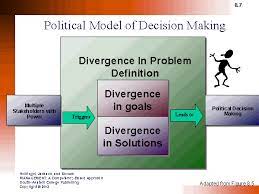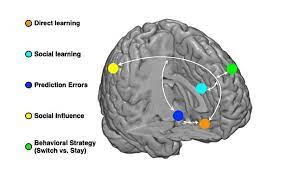Decision Making Tools: A Guide to Making Informed Choices
Life is full of choices, big and small. From deciding what to have for breakfast to making significant life-changing decisions, we are constantly faced with the need to make choices. However, making decisions can be challenging, especially when there are multiple factors to consider and potential consequences at stake. This is where decision-making tools come into play.
Decision-making tools are valuable resources that help individuals and organizations navigate the complex process of decision making. These tools provide structure, clarity, and objectivity, enabling us to make informed choices based on rational analysis rather than relying solely on intuition or guesswork.
The Benefits of Decision Making Tools
Using decision-making tools offers several advantages:
- Organized approach: Decision-making tools provide a systematic framework that guides you through the decision-making process step by step. This structured approach helps prevent overlooking important factors or rushing into hasty decisions.
- Clarity and focus: These tools help you define your goals and priorities clearly, allowing you to focus on what truly matters. By identifying key criteria and evaluating options against them, you can avoid being swayed by irrelevant factors or emotions.
- Rational analysis: Decision-making tools encourage logical thinking by providing a framework for evaluating alternatives objectively. They enable you to weigh pros and cons, assess risks, consider trade-offs, and ultimately make choices based on sound reasoning.
- Informed decision making: By utilizing these tools, you can gather relevant information and analyze it systematically. This leads to better-informed decisions that take into account all available data, reducing the likelihood of regrets or unfavorable outcomes.
- Collaboration and consensus-building: Decision-making tools can be particularly useful in group settings, facilitating collaboration and ensuring that all stakeholders have a voice. They encourage open discussion, consensus-building, and collective decision making.
Common Decision Making Tools
There are several widely used decision-making tools that cater to different decision contexts. Here are a few popular ones:
- Decision Matrix: Also known as a criteria matrix or Pugh matrix, this tool helps compare options against multiple criteria. It assigns weights to each criterion and rates each option accordingly, allowing for an objective evaluation of alternatives.
- SWOT Analysis: This tool assesses the strengths, weaknesses, opportunities, and threats associated with a particular decision. It helps identify internal factors that may influence the decision positively or negatively and external factors that could impact its success.
- Cost-Benefit Analysis: As the name suggests, this tool weighs the costs of a decision against its benefits. By quantifying both financial and non-financial aspects, it provides a clear picture of whether the benefits outweigh the costs or vice versa.
- Mind Mapping: Mind mapping is a visual tool that allows you to brainstorm ideas, explore relationships between concepts, and organize thoughts around a central theme. It promotes creativity while providing structure to complex decisions.
- Decision Trees: Decision trees use a branching diagram to map out possible decisions and their potential outcomes. By assigning probabilities to different outcomes and their associated values or consequences, decision trees help assess risk and make optimal choices.
No single decision-making tool is universally applicable; their effectiveness depends on the nature of the decision and individual preferences. It’s essential to choose the right tool for each situation and adapt it as needed.
Conclusion
Decision-making tools are invaluable aids in today’s complex world, where choices abound and consequences matter. By providing structure, objectivity, and clarity, these tools empower individuals and organizations to make informed decisions that align with their goals and values. Whether you’re facing a personal dilemma or a business challenge, utilizing decision-making tools can enhance your ability to navigate the decision-making process effectively.
Exploring Key Decision-Making Tools: Types, Methods, and Essential Strategies for Effective Choices
- What are decision-making tools?
- What are the 5 decision-making tools?
- What are the 4 types of decision-making?
- Which is a useful tool for decision-making?
- What are the two decision-making tools?
- What are the 5 methods for decision-making?
What are decision-making tools?
Decision-making tools are resources and techniques designed to assist individuals and organizations in the process of making informed choices. These tools provide a structured framework for evaluating options, considering various factors, and analyzing potential outcomes. Decision-making tools help individuals clarify their goals, weigh the pros and cons of different alternatives, assess risks, and ultimately make rational decisions based on logical analysis rather than relying solely on intuition or guesswork. By utilizing these tools, individuals can navigate complex decision scenarios with greater clarity, objectivity, and confidence.
What are the 5 decision-making tools?
When it comes to decision-making tools, there are several widely recognized and commonly used options. The five decision-making tools that are often mentioned are the Decision Matrix, SWOT Analysis, Cost-Benefit Analysis, Mind Mapping, and Decision Trees. Each of these tools serves a specific purpose and offers unique benefits in helping individuals and organizations make informed choices. From evaluating options against criteria to assessing strengths, weaknesses, opportunities, and threats, or quantifying costs and benefits, these tools provide structure and guidance throughout the decision-making process. By utilizing these five decision-making tools, individuals can enhance their ability to analyze alternatives objectively and make well-informed decisions that align with their goals.
What are the 4 types of decision-making?
When it comes to decision making, there are generally four types of decision-making approaches that individuals and organizations employ. The first is the rational decision-making model, which involves a systematic and logical analysis of options based on objective criteria. The second is intuitive decision making, where decisions are made based on gut feelings or instincts. The third type is collaborative decision making, which involves involving multiple stakeholders in the decision-making process to ensure consensus and diverse perspectives. Lastly, there is the adaptive decision-making approach, where decisions are made in response to changing circumstances or unpredictable situations. Each of these types has its own strengths and weaknesses, and understanding them can help individuals choose the most suitable approach for their specific needs.
Which is a useful tool for decision-making?
When it comes to decision-making, there are several useful tools that can assist in the process. One commonly recommended tool is the decision matrix, also known as a criteria matrix or Pugh matrix. This tool allows you to compare different options against multiple criteria by assigning weights and ratings to each criterion. By objectively evaluating alternatives based on these criteria, the decision matrix helps you make informed choices. However, it’s important to note that the usefulness of a tool may vary depending on the specific context and nature of the decision at hand.
What are the two decision-making tools?
When it comes to decision-making tools, there are numerous options available to help individuals and organizations make informed choices. However, two commonly used decision-making tools are the Decision Matrix and SWOT Analysis. The Decision Matrix allows for a systematic evaluation of alternatives by assigning weights to criteria and rating options accordingly. On the other hand, SWOT Analysis assesses the strengths, weaknesses, opportunities, and threats associated with a decision to gain a comprehensive understanding of its internal and external factors. These tools provide structure and objectivity, enabling individuals to make well-informed decisions based on rational analysis.
What are the 5 methods for decision-making?
When it comes to decision-making, there are various methods that can be employed to ensure a thoughtful and systematic approach. Five commonly used methods for decision-making include the Decision Matrix, SWOT Analysis, Cost-Benefit Analysis, Mind Mapping, and Decision Trees. Each of these methods offers unique benefits and can be applied in different decision contexts. The Decision Matrix helps compare options against multiple criteria, while SWOT Analysis assesses strengths, weaknesses, opportunities, and threats. Cost-Benefit Analysis weighs the costs against the benefits of a decision, Mind Mapping aids in brainstorming and organizing thoughts, and Decision Trees map out potential decisions and their outcomes. By utilizing these methods, individuals and organizations can make more informed choices that align with their goals and values.




